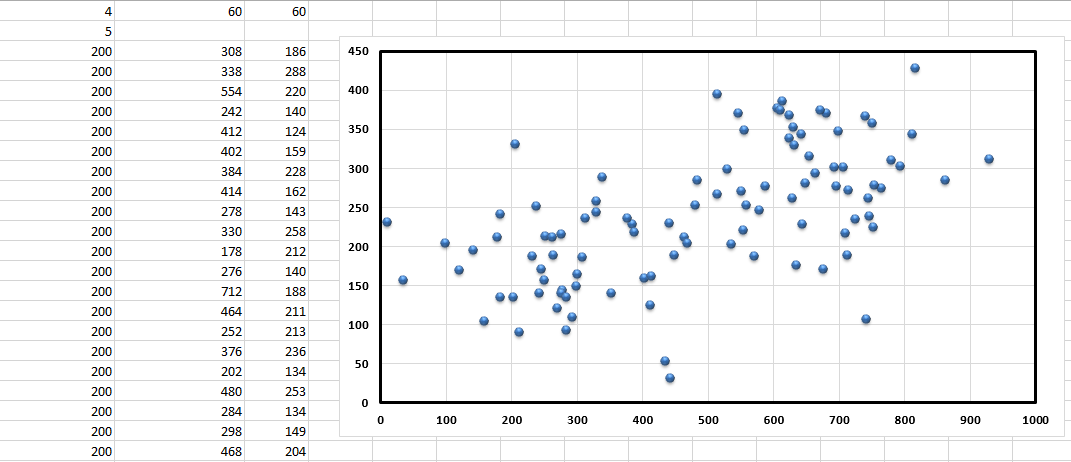Efficient Optimization of Adaptive Transmission Range in MANET - Maximizing Packet Delivery Ratio
Keywords:
MANETs, Packet Delivery Ratio, Adaptive Transmission Range, Efficient OptimizationAbstract
Mobile Ad-hoc Network (MANET) is a self-systematized network, hasn’t fixed infrastructure and centralized administration system. Due to the frequent changes in network topology, MANET nodes are free to change locations anywhere they like.
Novelty statement: Typically, mobile devices in MANET are configured identically to have same transmission ranges, homogeneously. Previous research proves the optimum homogeneous transmission range that maximizes Packet Delivery Ratio (PDR). Mostly, it has been shown inversely proportional to the node density, and transmission range itself along with its PDR is not being studied. This study aims to show that instead of using an optimum homogenous transmission range for all mobile nodes, a non-homogenous scheme, where optimum transmission range for each node is computed separately.
Material and Method: In order to validate the study, simulations were performed on the network simulator NS3 with node ranges of 25, 50, and 100 over an area of 500 m2. Destination Sequences Distance Vector (DSDV) Protocol was selected to perform simulations in which each scenario was executed for 300 seconds (5 minutes).
Result and Discussion: The evaluation of results show that the maximum PDR can be achieved by computing a separate transmission range for each node as compared to the homogenous transmission ranges.
Concluding Remarks: In the end, it can be concluded that adaptive transmission ranges are optimally effective as compared to homogenous transmission range.
References
J. Kaur and A. Singh, “A Review Study on the Use of MANET for Wireless Devices,” SSRN Electron. J., Apr. 2020, doi: 10.2139/SSRN.3572817.
A. Vijayaraj, H. K. Bhuyan, P. T. Vasanth Raj, and M. Vijay Anand, “Congestion Avoidance Using Enhanced Blue Algorithm,” Wirel. Pers. Commun., vol. 128, no. 3, pp. 1963–1984, Feb. 2023, doi: 10.1007/S11277-022-10028-1/METRICS.
A. Yasin and M. Abu Zant, “Detecting and Isolating Black-Hole Attacks in MANET Using Timer Based Baited Technique,” Wirel. Commun. Mob. Comput., vol. 2018, 2018, doi: 10.1155/2018/9812135.
P. Srikanth, A. Kumar, and M. Hedabou, “An Uncertainty Trust Assessment Scheme for Trustworthy Partner Selection in Online Games,” IEEE Access, vol. 10, pp. 132232–132249, 2022, doi: 10.1109/ACCESS.2022.3230148.
B. K. Tripathy, S. K. Jena, P. Bera, and S. Das, “An Adaptive Secure and Efficient Routing Protocol for Mobile Ad Hoc Networks,” Wirel. Pers. Commun., vol. 114, no. 2, pp. 1339–1370, Sep. 2020, doi: 10.1007/S11277-020-07423-X/METRICS.
G. Soni, M. K. Jhariya, K. Chandravanshi, and D. Tomar, “A Multipath Location based Hybrid DMR Protocol in MANET,” Proc. 3rd Int. Conf. Emerg. Technol. Comput. Eng. Mach. Learn. Internet Things, ICETCE 2020, pp. 191–196, Feb. 2020, doi: 10.1109/ICETCE48199.2020.9091778.
S. Abrejo and H. Kazi, “Venue-based Mobility Models: Evaluation of MANET Routing Protocols,” Int. J. Comput. Appl., vol. 74, no. 3, pp. 975–8887, 2013.
A. O. Bang and U. P. Rao, “A novel decentralized security architecture against sybil attack in RPL-based IoT networks: a focus on smart home use case,” J. Supercomput., vol. 77, no. 12, pp. 13703–13738, Dec. 2021, doi: 10.1007/S11227-021-03816-2/METRICS.
R. Jafar and I. Assistant, “The Impact of Signal Strength over Routing Protocols in Wireless Networks,” Int. J. Eng. Manag. Res., vol. 8, no. 4, pp. 126–130, Aug. 2018, doi: 10.31033/IJEMR.8.4.15.
Z. Xia et al., “A Comprehensive Survey of the Key Technologies and Challenges Surrounding Vehicular Ad Hoc Networks,” ACM Trans. Intell. Syst. Technol., vol. 12, no. 4, Jun. 2021, doi: 10.1145/3451984.
H. Xu, Y. Zhao, L. Zhang, and J. Wang, “A Bio-Inspired Gateway Selection Scheme for Hybrid Mobile Ad Hoc Networks,” IEEE Access, vol. 7, pp. 61997–62010, 2019, doi: 10.1109/ACCESS.2019.2916189.
D. A. Goldberg, M. I. Reiman, and Q. Wang, “A Survey of Recent Progress in the Asymptotic Analysis of Inventory Systems,” Prod. Oper. Manag., vol. 30, no. 6, pp. 1718–1750, Jun. 2021, doi: 10.1111/POMS.13339.
M. Izharul, H. Ansari, and S. P. Singh, “Adaptive-Transmission-Power Ad Hoc On-Demand Distance Vector Routing Protocol for Mobile Ad hoc Network,” Int. J. Comput. Appl., vol. 138, no. 2, pp. 975–8887, 2016.
Z. S. J. & Y. Guo, “An improved AODV routing protocol based on energy optimization,” IJISET–Int J Innov Sci Eng Technol, vol. 3, no. 6, pp. 335–340, 2016.
K. N, V. G, P. R, L. Florence, and F. A. Salman, “AD-HOC Better Costing Dynamic Routing Protocol for Enhancement of Network Lifetime,” Cent. Asian J. Theor. Appl. Sci., vol. 3, no. 5, pp. 305–329, May 2022, doi: 10.17605/OSF.IO/SK9UY.
N. U. Park, J. C. Nam, and Y. Z. Cho, “Impact of node speed and transmission range on the hello interval of MANET routing protocols,” 2016 Int. Conf. Inf. Commun. Technol. Converg. ICTC 2016, pp. 634–636, Nov. 2016, doi: 10.1109/ICTC.2016.7763550.
A. Porto and M. Stojanovic, “Optimizing the transmission range in an underwater acoustic network,” Ocean. Conf. Rec., 2007, doi: 10.1109/OCEANS.2007.4449241.
W. Wang, X. Liu, Y. Yao, Y. Pan, Z. Chi, and T. Zhu, “CRF: Coexistent Routing and Flooding using WiFi Packets in Heterogeneous IoT Networks,” Proc. - IEEE INFOCOM, vol. 2019-April, pp. 19–27, Apr. 2019, doi: 10.1109/INFOCOM.2019.8737525.
L. Campanile, M. Gribaudo, M. Iacono, F. Marulli, and M. Mastroianni, “Computer Network Simulation with ns-3: A Systematic Literature Review,” Electron. 2020, Vol. 9, Page 272, vol. 9, no. 2, p. 272, Feb. 2020, doi: 10.3390/ELECTRONICS9020272.
A. M. Shaban, S. Kurnaz, and A. M. Shantaf, “Evaluation DSDV, AODV and OLSR routing protocols in real live by using SUMO with NS3 simulation in VANET,” HORA 2020 - 2nd Int. Congr. Human-Computer Interact. Optim. Robot. Appl. Proc., Jun. 2020, doi: 10.1109/HORA49412.2020.9152903.
M. Djoudi, “Impacts of transmission range in homogeneous wireless networks,” Proc. - 3rd Int. Conf. Syst. Networks Commun. ICSNC 2008 - Incl. I-CENTRIC 2008 Int. Conf. Adv. Human-Oriented Pers. Mech. Technol. Serv., pp. 6–10, 2008, doi: 10.1109/ICSNC.2008.64.
H. Al Amri, M. Abolhasan, and T. Wysocki, “Scalability of MANET routing protocols for heterogeneous and homogenous networks,” Comput. Electr. Eng., vol. 36, no. 4, pp. 752–765, Jul. 2010, doi: 10.1016/J.COMPELECENG.2008.11.008.

Published
How to Cite
Issue
Section
License
Copyright (c) 2023 50SEA

This work is licensed under a Creative Commons Attribution 4.0 International License.




















